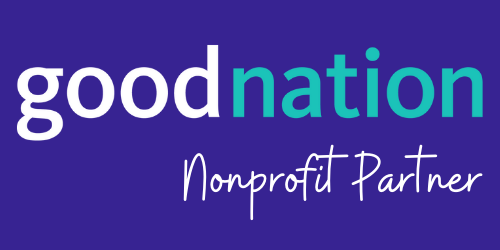Designing Better Borrowing: The Future of Small-Dollar Loans
HIGHLIGHTS
- Small-dollar loans represent an affordable, consumer-centric product, but behavioral barriers often prevent more people from accessing and repaying them.
- Behavioral design can help address these barriers and give more consumers access to the credit they need.
- Small-dollar loans are an opportunity for banking institutions to tap into a large and reliable market, and providers who adopt behaviorally-driven design can deliver strong business results with these products.
The Challenge
Roughly two-thirds of people across the United States struggle to cover an unexpected $400 expense; this is especially problematic given that the average emergency expense is around $1400. Without cash on hand, people have to make difficult choices or rely on expensive options like using payday loans or overdraft services to manage income dips or expense spikes. While a salve in the moment, these options can leave people worse off in the long run.
Small-dollar loans, which are short-term, low-cost, installment loans of generally $2500 or less, provide a welcome alternative to the more expensive options. These loans are also usually faster and easier to access than payday loans and related options. Despite a growing number of banks and credit unions offering small-dollar loans, behavioral barriers prevent their wider use and can hinder timely repayment.
Banks have the opportunity to leverage small-dollar loans to reach a large market of viable customers, serve their communities, and do so sustainably. However, simply making them available is not sufficient to ensure they reach the customers who could most benefit. By addressing key behavioral barriers, small-dollar loan providers can increase uptake of a more affordable option, support their customers’ financial health, and increase trust in their institutions.
Our work aims to ensure financial products, services and policies are designed to support people in financial distress and enable them to leverage opportunities. Over the last four years, ideas42 has worked with dozens of organizations to expand consumer access to and adoption of small-dollar loan products. Below is an overview of our work so far.
The Promise of Small-Dollar Loans for Consumers & Providers
While initial signs point to borrower enthusiasm around small-dollar loans many people still have questions about the effects of these loans on consumers and providers.
To answer these questions, ideas42 spoke to over a dozen market participants and stakeholders, including banks and credit unions, to unpack the provider experience with small-dollar loans. These conversations offered insight into the provider rationale for and experience with offering small-dollar loans.
ideas42 also interviewed borrowers who had recently taken out a small-dollar loan from major banks. Borrowers shed light on the decision to apply for a small-dollar loan, their experience with applications and repayment, and the impact of these loans on their financial health.
This research culminated in two reports. The first report details the borrower and provider experience, The Promise of Small-Dollar Loans. The second, forthcoming report is a deep dive on the variety of borrowers benefiting from increased access to small-dollar loans.
This work is supported by The Pew Charitable Trusts.
Increasing Access to Small-Dollar Loans
Small-dollar loan providers can struggle to get high enough uptake of small-dollar loans, challenging their viability. Many people also take on expensive debt, pay high fees, or forgo important expenses because they don't realize these affordable loans are available.
Many of the barriers limiting small dollar loans uptake are behavioral. In this project, our aim was to provide insights relevant to a range of providers on how to tackle these barriers and increase uptake of these loans. To generate these insights, we worked with five financial providers, nonprofit lending organizations, financial opportunity centers, and four financial networks representing over 1,000 credit unions. We also interviewed customers of a credit union that predominantly serves low-to-moderate income people.
We developed evidence-based strategies providers can leverage to increase take-up of this product. Click here to dive into the strategies and access our behavioral design checklist.
This work is supported by JPMorganChase.
Increasing Repayment to Small-Dollar Loans
One key metric for evaluating the success of a small-dollar loan product is repayment. Behavioral design can increase loan repayment in ways that can help customers avoid penalties and build credit while enhancing business sustainability by lowering product costs such as reducing staff time.
We partnered with Peoples Advantage Federal Credit Union to increase timely repayment of their Fast Cash Loan (a small-dollar loan product) and help members avoid negative consequences of being past due.
By increasing awareness of repayment terms and conditions at the time of application and implementing a series of carefully timed repayment reminders, we:
- Reduced the average daily proportion of past-due Fash Cash borrowers by 8%
- Helped past-due borrowers make payments sooner, with 11% fewer paying fees
- Saw a drop in calls from confused or frustrated members
- Saw a 19-20% drops over multiple months in the proportion of delinquent Fast Cash balances, reducing portfolio risk
Beyond small-dollar loans, these findings are applicable to other financial products; Peoples Advantage saw similar benefits when applying these changes to their entire portfolio. Implementing low-cost and low-touch interventions can improve overall loan performance, saving lenders—and borrowers—millions.
Learn more about this work below!
This work is supported by JPMorganChase.
Takeaway
Small-dollar loans can be an important tool for people in times of need. Many financial institutions are newly offering these products, and face hurdles to attracting low-to-moderate income customers who are already using other means of borrowing for emergency needs. Providers that adopt behavioral design principles can deliver a product that meets its full potential, crafting a service that marries the responsible credit terms of the small-dollar loan with the convenience of expensive alternatives.
Our results are a testament to the power of behavioral design, with far-reaching implications for a wide array of financial service providers. Lenders who are willing to better understand their customers’ needs and realities, and to design responsible solutions, can reduce financial distress while delivering strong business results—a win-win for business and consumer financial health.


